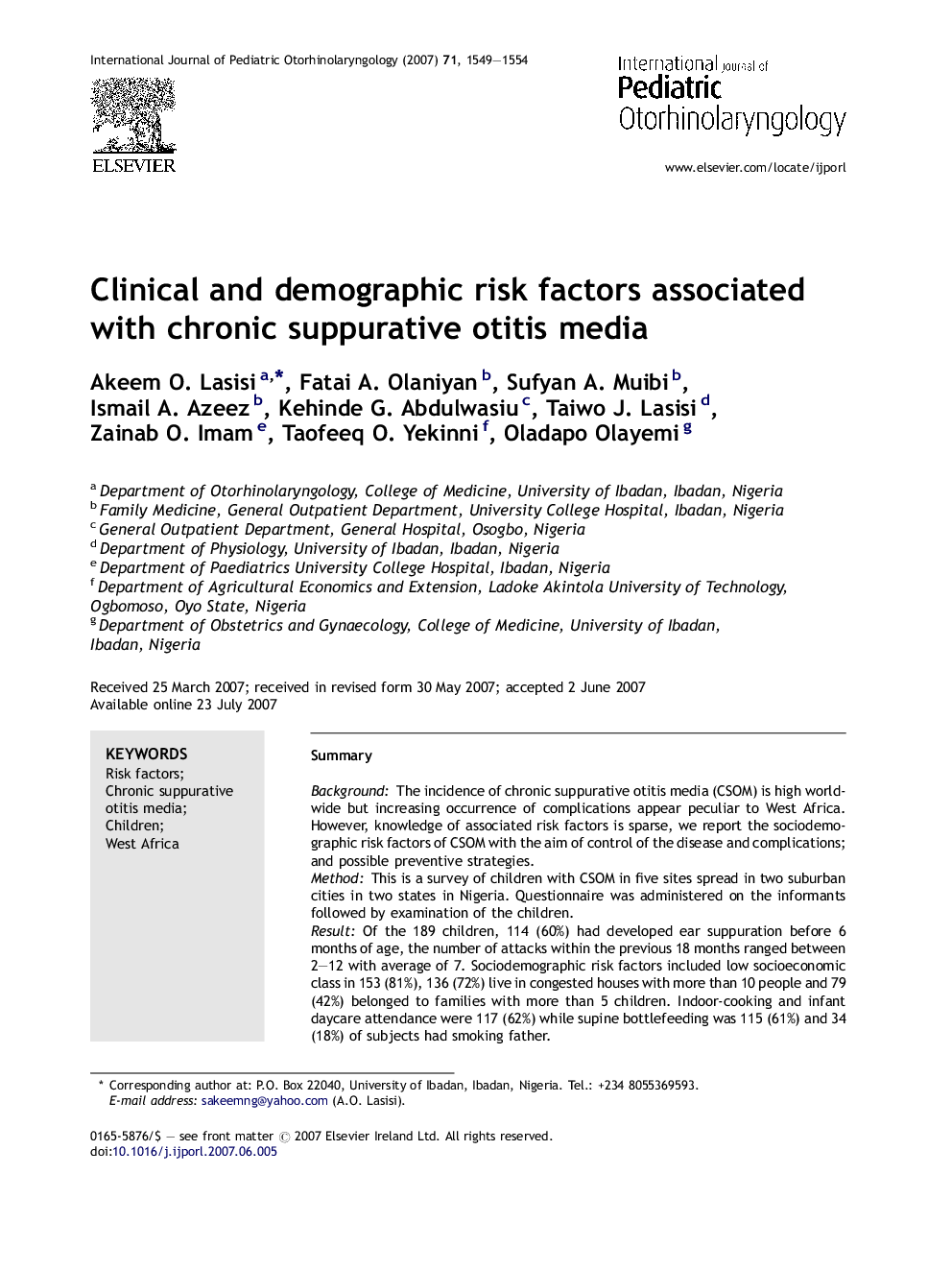| Article ID | Journal | Published Year | Pages | File Type |
|---|---|---|---|---|
| 4113507 | International Journal of Pediatric Otorhinolaryngology | 2007 | 6 Pages |
SummaryBackgroundThe incidence of chronic suppurative otitis media (CSOM) is high worldwide but increasing occurrence of complications appear peculiar to West Africa. However, knowledge of associated risk factors is sparse, we report the sociodemographic risk factors of CSOM with the aim of control of the disease and complications; and possible preventive strategies.MethodThis is a survey of children with CSOM in five sites spread in two suburban cities in two states in Nigeria. Questionnaire was administered on the informants followed by examination of the children.ResultOf the 189 children, 114 (60%) had developed ear suppuration before 6 months of age, the number of attacks within the previous 18 months ranged between 2–12 with average of 7. Sociodemographic risk factors included low socioeconomic class in 153 (81%), 136 (72%) live in congested houses with more than 10 people and 79 (42%) belonged to families with more than 5 children. Indoor-cooking and infant daycare attendance were 117 (62%) while supine bottlefeeding was 115 (61%) and 34 (18%) of subjects had smoking father.The clinical risk factors were upper respiratory tract infection (URI) 85 (45%), allergy 53 (28%), adenoid 54 (28%) and malnutrition 65 (34%).The univariate analysis revealed that low social class (OR = 7.33, CI = 4.18–12.83, P = 0.0001), malnutrition (OR = 3.57, CI = 1.88–6.76, P = 0.00001), bottlefeeding (OR = 2.93, CI = 1.63–5.28, P = 0.0001), indoor-cooking (OR = 1.35, CI = 0.88–2.10, P = 0.161) and high number of people in a household (OR = 0.59, CI = 0.34–0.98, P = 0.04) are significant in development of OM; while multivariate logistic regression analysis showed malnutrition (OR = 3.48, CI = 1.633–7.425, P = 0.001), low social status (OR = 7.74, CI = 4.15–14.43, P = 0.0001) and indoor-cooking (OR = 2.34, CI = 1.18–4.66, P = 0.014), second table. Parental smoking, daycare attendance, allergy, adenoiditis/adenoidal hypertrophy and upper respiratory tract infection were not found significant.ConclusionLow socioeconomic class, malnutrition, congestion from high number of children in the household and bottlefeeding constitute significant risk factor. The early onset of disease (<6 months) may suggest a prenatal predisposition. We need further research for the understanding of the biologic effect of these factors while this remains a database for prevention and control of disease.
